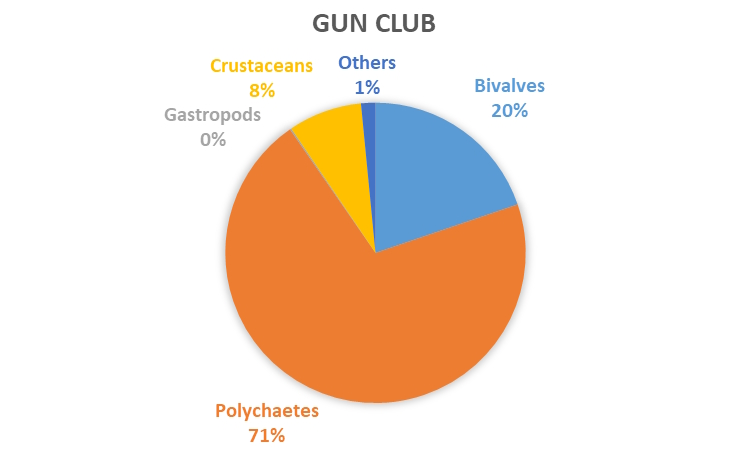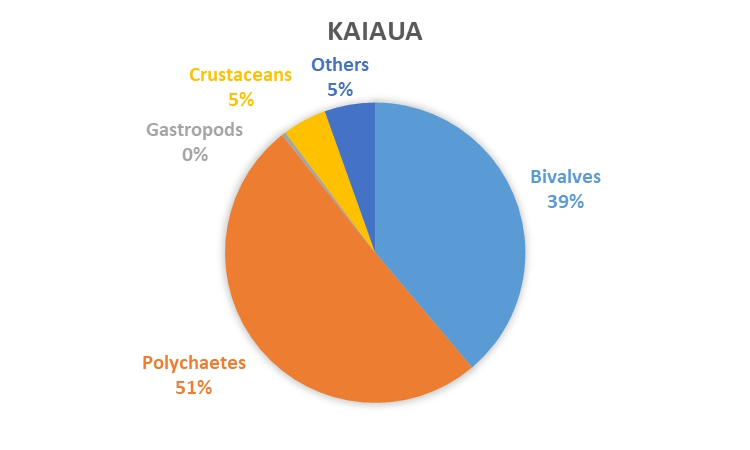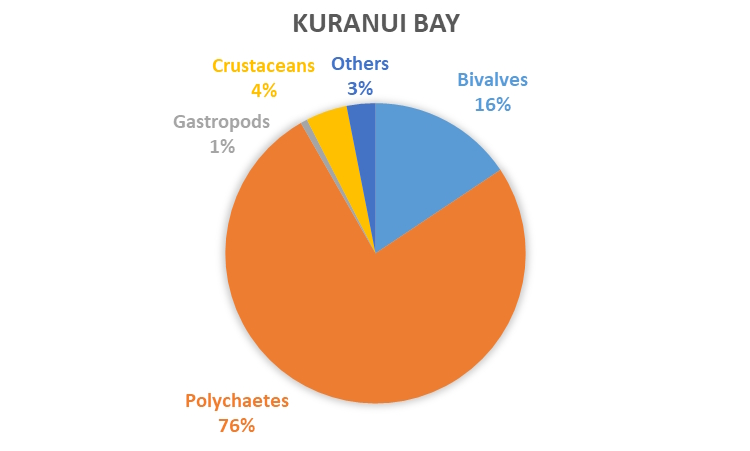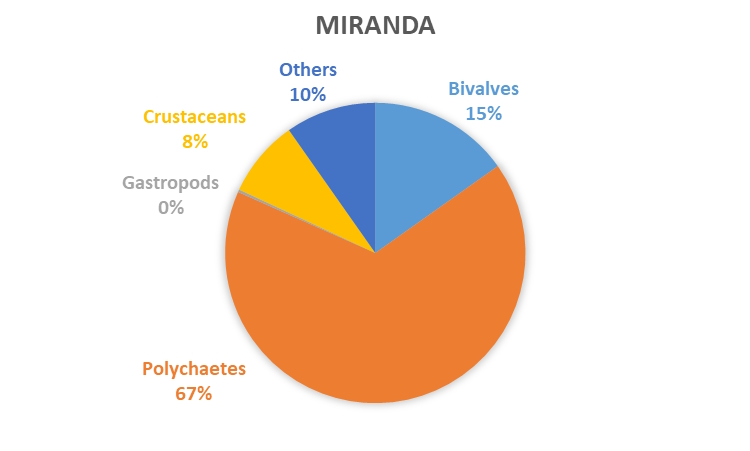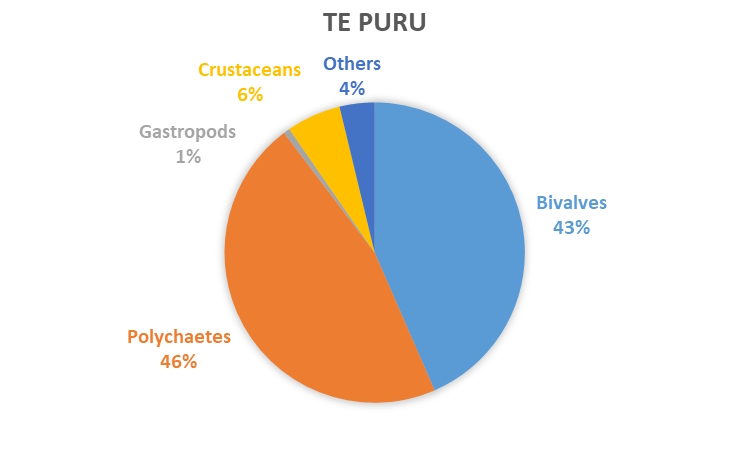Firth of Thames - estuary monitoring results
Regional Estuary Monitoring Programme (REMP)
Sediment-dwelling organisms
Polychaetes (marine worms) and bivalves (shellfish – cockles, pipi) are the major components of the sediment-dwelling organism communities at all five Firth of Thames REMP monitoring sites. Crustaceans (crabs, shrimps) were relatively abundant at several monitoring sites. Gastropods (snails) and other taxa are generally rare in the Firth of Thames.
For further monitored results (estuary health indicators) please go to the estuary health LAWA website. A detailed analysis of all trends in our results as well as the relationships between sediment properties and sediment-dwelling communities are investigated in our latest trend report.
